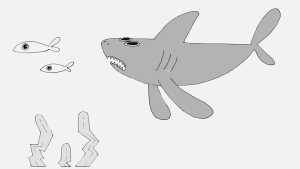California’s Coastal Cleanup Day unites volunteers against plastic pollution
courtesy of coastalcleanupday.org
Contra Costa County brought together over 800 volunteers this year, collecting over 10,000 pounds of trash
September 16, 2022
California’s 38th annual Coastal Cleanup Day takes place on Sept. 17 , 2022 from 9 a.m. to noon. An average of 70,000 volunteers from around the state participate in this global event, with over 50 countries dedicating a day to picking up trash around our beaches, lakes and waterways.
Coastal Cleanup Day was first organized by the Coastal Commision, and has been collecting data since 1996. Volunteers are asked to record the quantity and types of trash they pick up, as part of an effort to analyze the waste that runs through our waterways.
“There’s this kind of camaraderie and community the people look forward to, and I think people really enjoy this day,” Heidi Petty, the Watershed Program Manager for the Resource Conservation District, said.
When volunteers come out to participate in cleaning up, they realize the responsibility and impact they can make.
“Knowing how few people realize how important [this day] is makes it more important to me,” Petty said. “The creeks are the arteries of our waterways … what you do upstream matters downstream.”
Creek cleanups can be one of the most impactful events, as they can bring together the local communities around it, as well as being the source of pollution that ultimately ends up in the ocean.
“People really have an eye opening experience with seeing the quantities of trash that are just lying around,” said Paula White, the Community Programs Manager of the Watershed Project.
In 2019, a total of 917,000 pounds of debris were collected by around 74,000 volunteers across California.
“We want to make the public aware of the positive impacts that years of data collecting have had,” White said.
Most events that take place on Coastal Cleanup Day encourage volunteers to keep track of the number and types of trash found, and record it on an app called Clean Swell.
According to the data collected, plastic bags account for 7.71% of the total amount of trash collected by volunteers during Coastal Cleanup Day. In 2016, California passed Proposition 67, which banned the use of single-use plastic bags in most grocery and retail stores. Instead of single-use plastic, customers are offered recycled or reusable bags at a charge of at least 10 cents.
“The Executive Director of the Watershed Project, Juliana Gonzalez, went to city council meetings and brought this data to the council, which was an instrumental part of adopting this ban,” White said.
Since the ban, there has been a dramatic decrease in the number of plastic bags found during cleanups.
“[We want to] let the public know that their voice is really important to decision makers at the local level,” White said.
Even if you are unable to attend Coastal Cleanup Day, there are many other ways to contribute. California’s Coastal Commission offers ways to clean up in your own community by downloading Clean Swell, and you can also donate to support their programs. But the reason for needing to clean up our beaches and waterways comes from the original source of the pollution.
“It’s not easy to buy from sustainable companies, [but] there’s a lot more options now that there weren’t before,” Petty said. “I want to push the options, and put pressure on companies to make their products reusable.”
While the pandemic has drastically decreased the number of volunteers in the past two years, from an average of 2,000 volunteers in Contra Costa County to less than 400 in 2020, the number of volunteers can hopefully bounce back to the magnitude of previous years.
“[Coastal Cleanup Day] is a great opportunity for everyone, because how can you value something when you’ve never been there?” Petty said.





